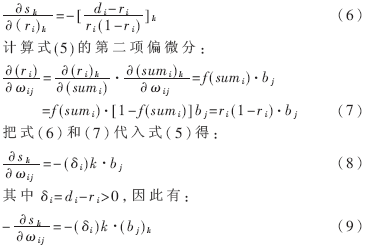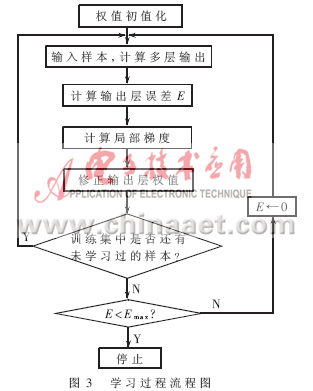With the rapid development of highways and automobile technology in China, the speed of cars is getting higher and higher, and a more effective traffic management system is needed. Such a system should be able to automatically identify the car and accurately determine the type of car. Since the 1950s, point-measuring devices such as toroidal coil detectors have been used primarily for traffic control and traffic data collection at intersections. Such detection systems usually use an inductive coil buried under the road surface to identify the vehicle by electromagnetic induction, but such a system has drawbacks such as expensive installation, difficulty in maintenance, and inability to classify the vehicle. Using the sound measurement method and training through the neural network, the type of the car passing through the road surface can be effectively identified.
This article refers to the address: http://
1 Sound measurement car type identification system
The block diagram of the working principle of the acoustic measurement vehicle type identification system is shown in Figure 1.

The sound measurement method of the car type identification system is: when the car passes, the microphone transmits the sound pressure signal of the sound wave generated by the microphone to the classification system through the connector, and converts the sound pressure signal into a series of discrete waves through the A/D converter. Digital signal and spectral conversion (FFT conversion) in the spectrum analyzer.
The neural network provides a classification indicator for each vector received by the attenuator. Each vector displays a predetermined pause time, that is, an object that allows sound to be produced for a short time interval (e.g., 0.1 second). Thus, the neural network generates a classification indicator for each sound every 0.1 seconds, independently classifying each vector. The time totalizer is a processor that classifies the flow of the indicator after the neural network analysis, that is, the time totalizer combines the results with the operation multiple times to generate the final classification result of the entire system output.
The acoustic type method based on neural network uses a low-cost sensor material, which has a good effect on the type identification of the car, and the application coverage is wider, and is not affected by weather and light.
2 Neural network learning training algorithm
After the original noise is preprocessed, the remaining recognition work is performed by the neural network. The network designed in this paper is a three-layer feedforward network. Its structure is: the input layer has n nodes, n=Np×N; the hidden layer has P nodes, and the output layer has q nodes. The q output nodes correspond to q models respectively, the input layer adopts the input value as the value after Fourier transform, and the activation function of the hidden layer and the output layer is the Sigmoid function. After the training is completed, when the output value of the i-th node of the output layer is greater than 0.99 and the output value of the other nodes is less than 0.11, it is considered that the model identified this time is the i-th car. The network structure is shown in Figure 2.

The training algorithm used is the BP algorithm, and the error function in the algorithm is:

Where dk and rk are the desired output vector and the actual output vector of the network, respectively, and M is the pair of training samples.
A prominent shortcoming of the BP algorithm is that the learning speed is slow, and the reasons are various, such as related to the structure of the network, and related to the shortcomings of the learning algorithm itself. When the weight function is used to adjust the weight, it is known from the derivation that the weight adjustment amount always includes the following factors:

As can be seen from the above equation, when the actual output ri of the output layer unit i is close to 0 or 1, the factor ri(1-ri) in the error signal causes the error signal to become small, if the output layer unit i When the actual output ri differs greatly from the expected output value di, no strong error is generated to correct the weight, thereby prolonging the learning process. In addition, since the excitation function f(x)=(1+ex)-1 is a saturation function, when it tends to be saturated, the derivative is close to zero, causing the convergence speed to slow down. Therefore, it can be considered to remove the factor ri(1-ri) from the result of the error function to the differential partial differentiation, so the error function of the BP algorithm can be improved to: 
Since 0i=f(sumi)<1 and the value of di is 0 or 1, sk>0, sumi=-∑ωij·bj. The convergence of this error correction method is briefly analyzed below.
Using chain differential rules to get: 
The first term on the right end represents the effect of the ith component of the output vector on the deviation, and the second term represents the effect of the weight coefficient on the output component. Calculate the partial differential of the first term according to equation (4):

Where bj>0 is the output of the upper hidden layer; equation (9) is the negative gradient direction on the sk response surface in the ωij space.
Thus, for any element ωij in the weight matrix [W]:

This shows the relationship between the correction of the weight and the gradient descent method, which shows that the error correction method converges on the adjustment of the weight. Using the error function as an improvement of equation (3), the BP algorithm does eliminate the ri(1-ri) factor from the result of the error function biasing the weight. From the actual training point of view, when the weight correction is performed by this algorithm, it can converge quickly.
The BP algorithm and the improved BP algorithm in the paper were respectively trained in the network (four models were selected, ie q=4), and used on the actual traffic lines for inspection. The sample of each model is 4 sets of samples (small car, medium car, heavy car, super heavy car) under different conditions in practical applications, so 16 sets of noise are used as training samples, and the nodes of the hidden layer are set to p. =16. The flow chart of the network learning process is shown in Figure 3.

In the case where the network structure is exactly the same, the error function of (1) is used for training. After cross training for 20,000 times, it can be used in practice, and the output precision can reach 0.99. The improved error function is used. 3) Training, only 200 times, can achieve the same accuracy, and can be put into the traffic line to identify the car type online. The test results are shown in Table 1.

From the test results, the improved BP algorithm can speed up the learning of the network and can be easily applied to the actual production line. Even if a new model appears on the traffic line, the network training can be completed very quickly. The test results show that the recognition error rate is less than 1%, and the recognition effect on the car is better than the statistical method. After using the improved BP algorithm, the learning speed is improved, and the practical application of the neural network identification, especially to the traffic line with a large traffic flow, provides an effective method. From the practical point of view, the neural network recognition is higher than the fault characterization with feature statistical recognition, and is better than the feature statistics method. In practice, if there are new models to be added, just make a slight improvement in the structure of the network.
rotary cultivators are versatile and the it used in paddy field, which is welcomed by paddy field ploughing farmers by a plurality of unique advantages. These products are of small resistance and high efficiency. In addition, the shaft sealing of these products are proper and without straw winding. Our rotary cultivator also has advantages of racing against time, saving labor, working efficiency and low cost etc. Side sooth drive, no blind area and more durable are the benefits of our products.
Rotary Model
1GQ-150
1GQ-180
1GQ-200
1GQ-230
Auxiliary power kw
36.8-51.5
36.8-51.5
51.5-65
51.5-65
Tillage web cm
150
180
200
230
Tillage depth cm
8-14
Transimision model
Side gear
Tractor connections
Three suspension
Supporting rotary knife
â…¡T175/IT195
Rotary knife quantity
46
56
62
76
Tractor PTO speed r/min
720/1000
Knife shaft speed r/min
330/460
Scope
Paddy field,plowing operation and the ridge forming drylands
Dimensions(length×width×height) mm
1800×600×1050
2070×600×1050
2250×750×980
2580×800×1050
Build quantity kg
290
295
386
396
PTO flower number key × outer diameter mm
8×38
If you have any questions, please contact with us directly. rotary cultivators are produced
byour company with high quality and good appearance. Welcome you can visit our factory.For
inqury,Please send mail directly to us!
Rotary Cultivator
Rotary Cultivator,Small Rotary Cultivator,Rotary Tiller Cultivator,Small Tractor Cultivator
Hunan NongFu Machinery&Electronic.Co., Ltd. , http://www.nfagmachine.com